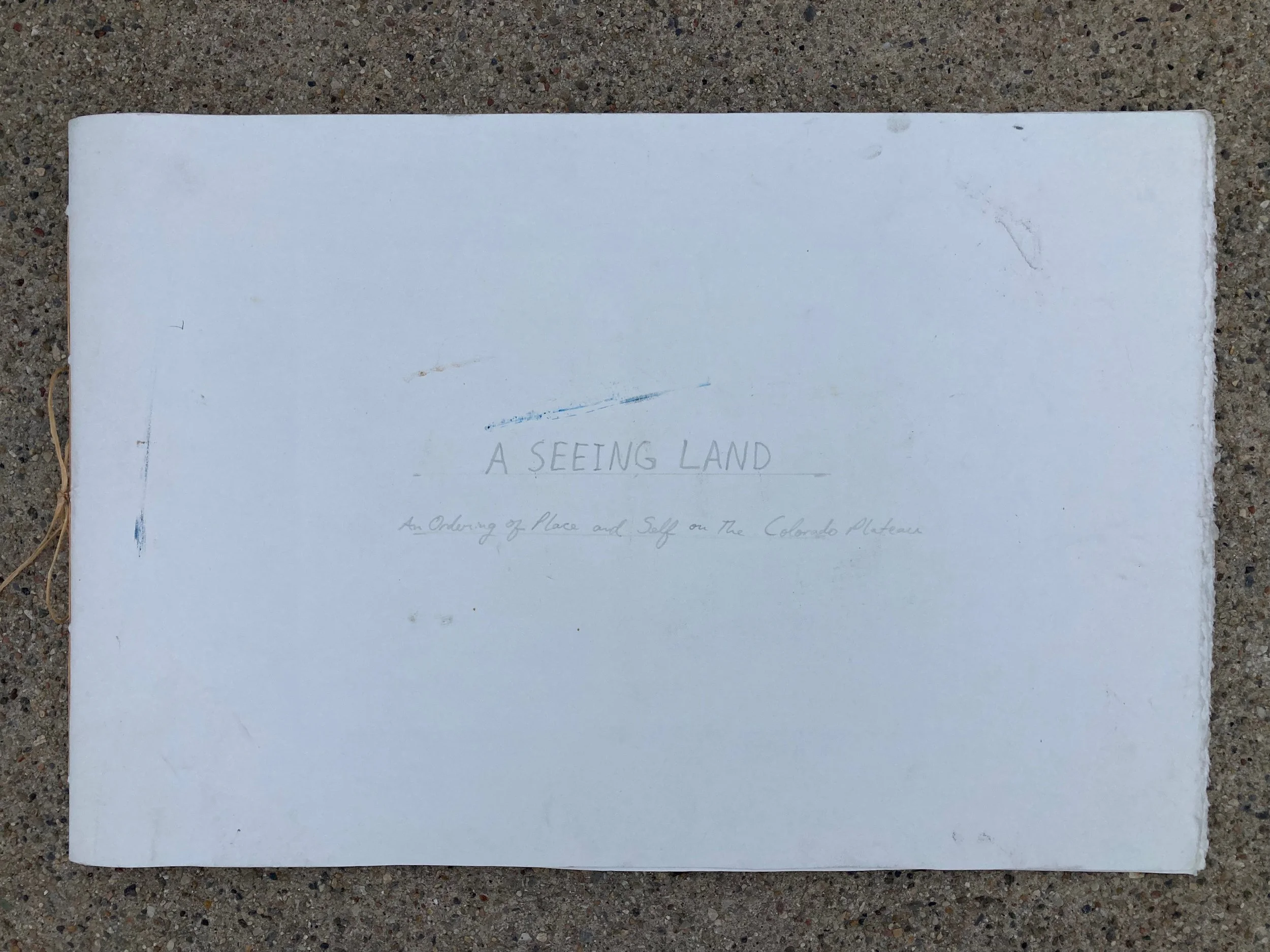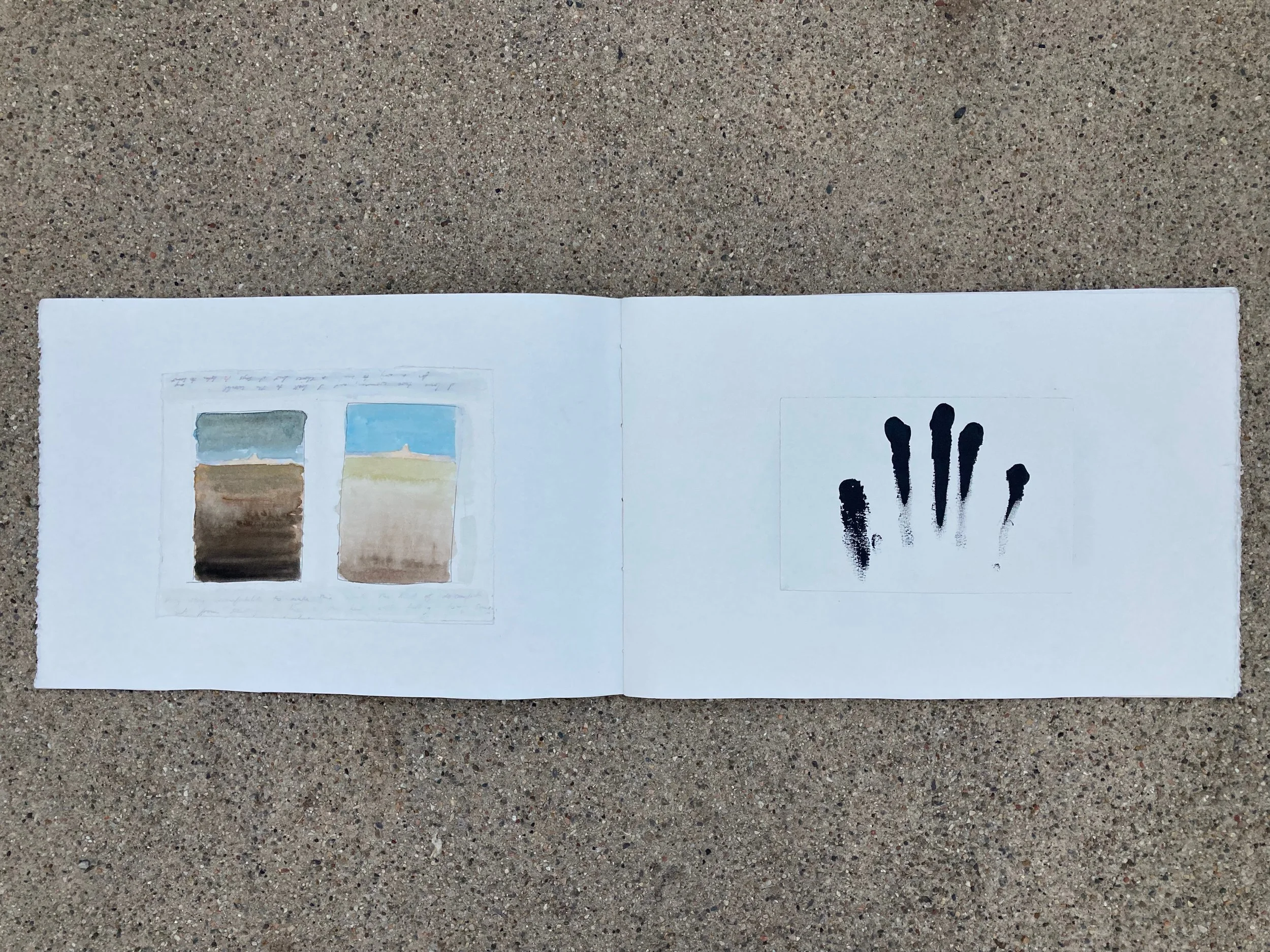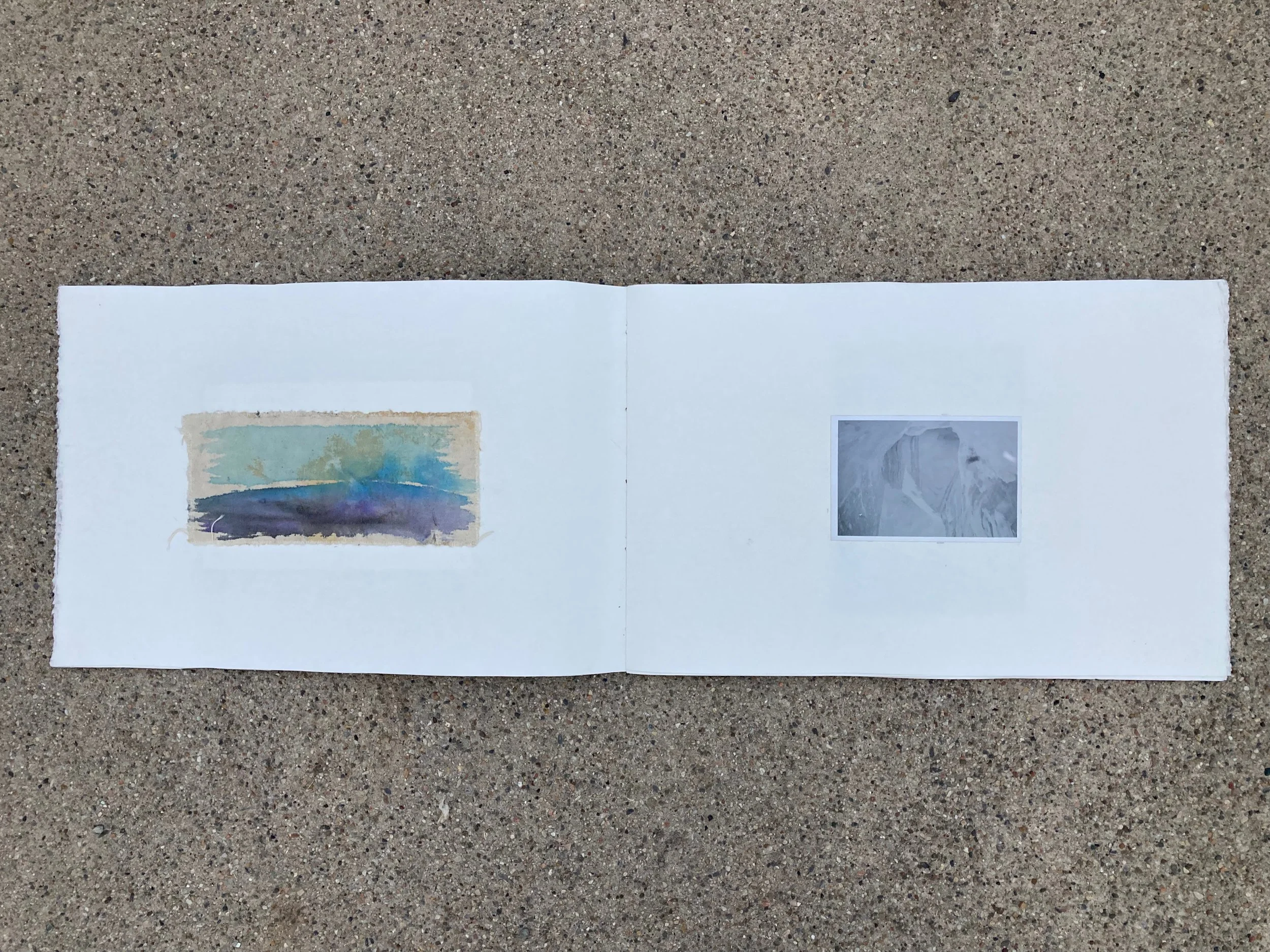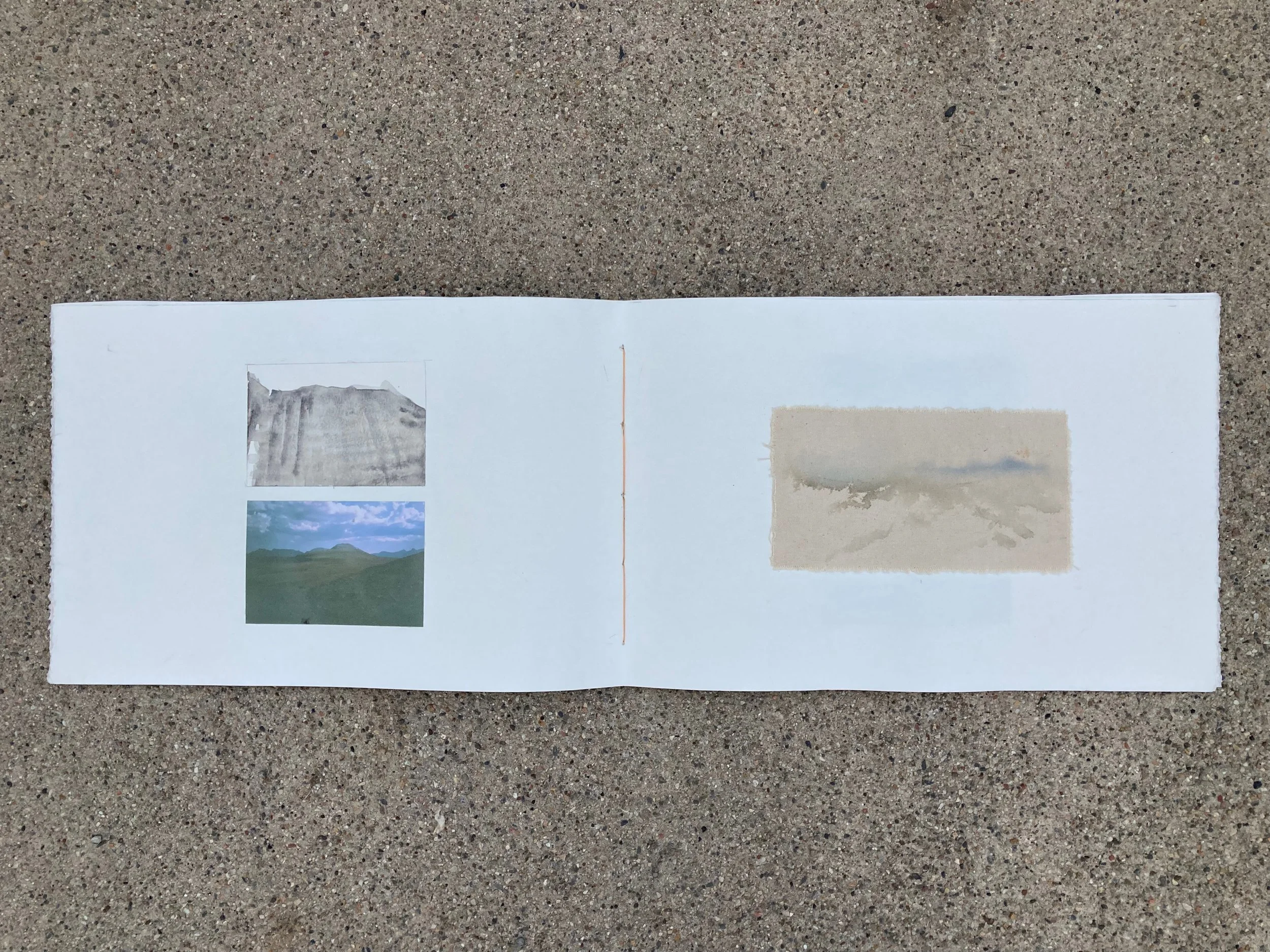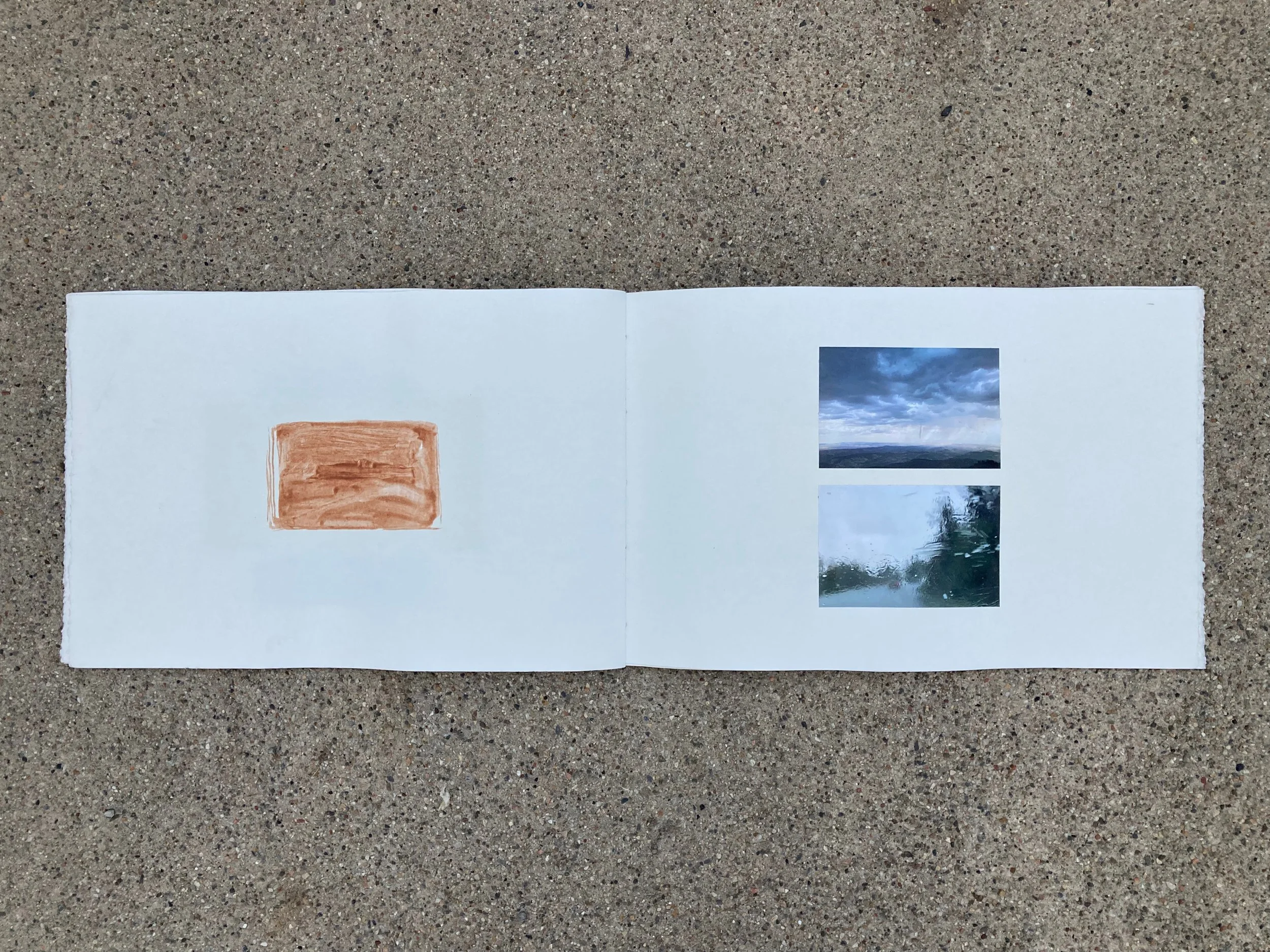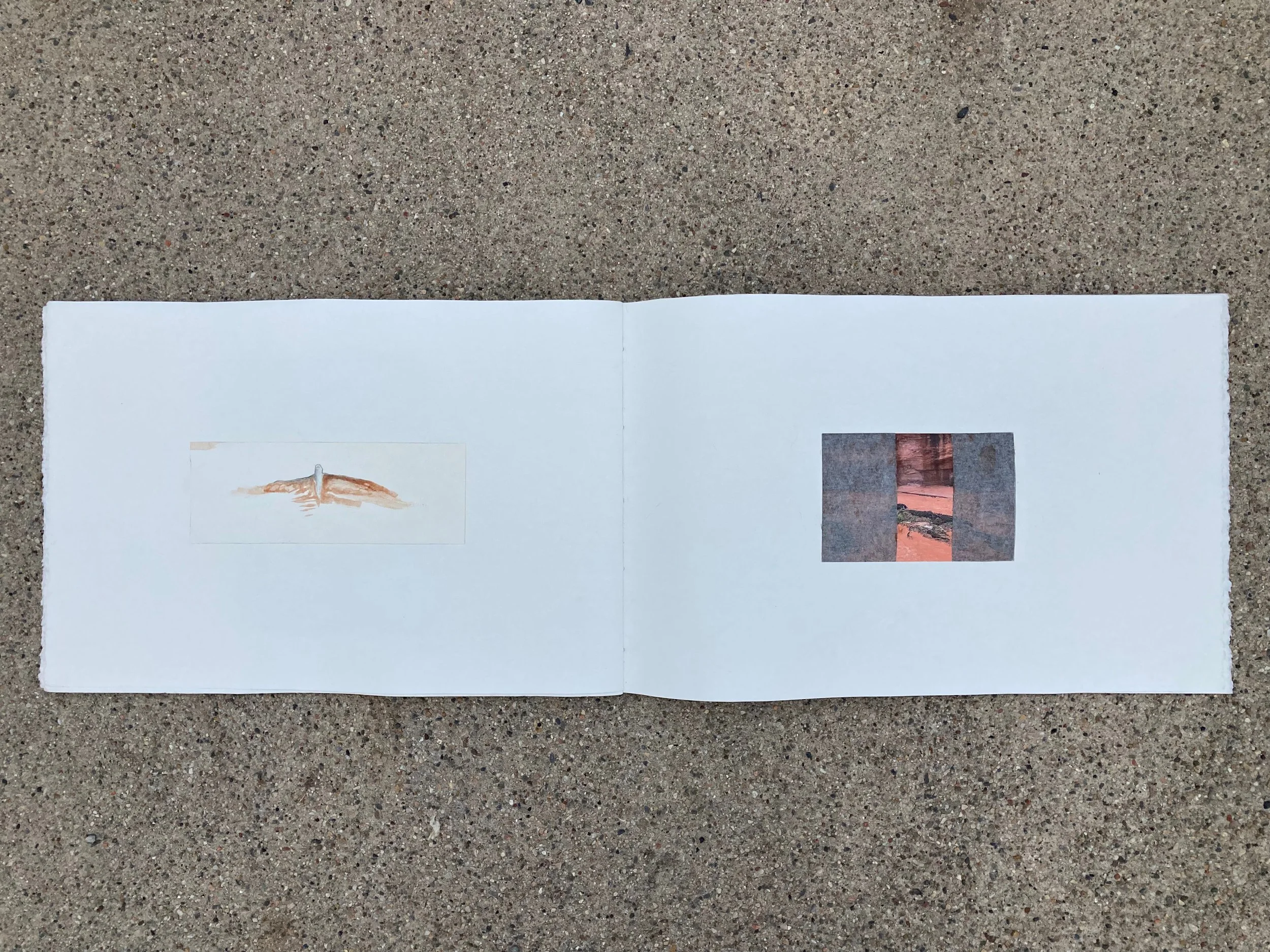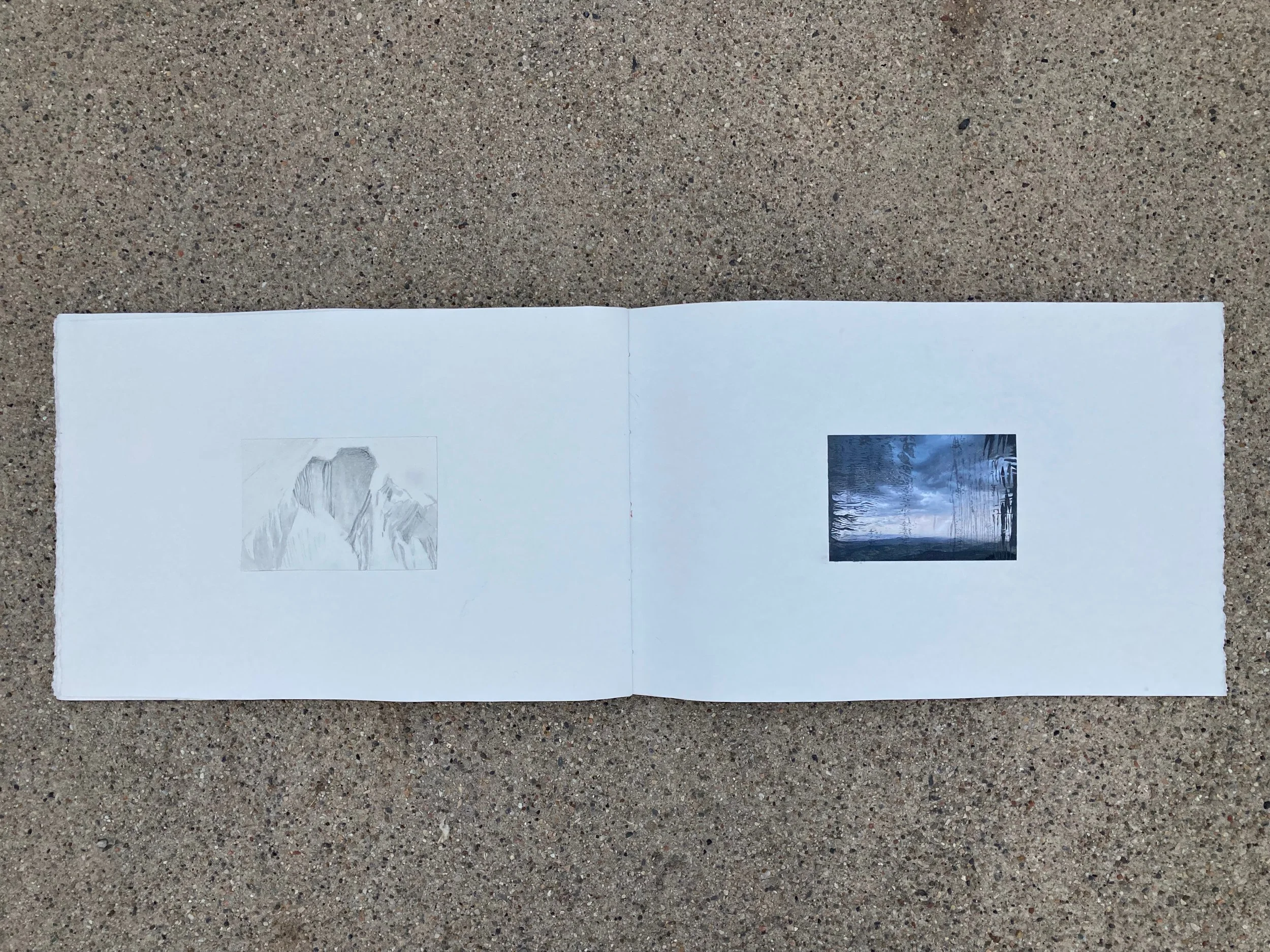“A Seeing Land: An Ordering of Place and Self on the Colorado Plateau”
The intention behind A Seeing Land was to put images next to each other which I felt were related in particular ways but which would never appear to be related outside of my juxtaposition. And I wanted to do it without questioning myself, without judging myself. I put virgas next to desert varnish. I put photos of flash floods next to drawings in which the selfsame mud is used. I put observed renderings next to invented horizons. As if to say: “There is a line that connects all these things.” It’s not the only line that connects these things. It’s not an ultimate ordering. But it’s MY ordering. It’s the way I see the world. It’s what I have to say about a particular place, my home, the Colorado Plateau.
The process actually felt good for a change. I enjoyed it. I dialed the scope of my effort back from the universal to the individual, aware that I can’t know a whole lot more than what I can perceive while simultaneously suggesting through my juxtapositions that I could really be onto something. After all, I’ve spent a lot of time walking around the desert. I could be wrong, but I say “Look!” anyway. Look at the ways these images are connected. Look at the ways these desert landscapes appear to function. Look at the repeating forms. And then also see when they don’t repeat, when patterns break down. See where my knowledge ends.
I hope that this piece decenters all vantages while respecting them all equally. I want it not to decenter the human exclusively—as my previous work has done—but instead to bring the human into communion with other viewpoints just as valid. To center and decenter all equally. To say that it is not the human who is to blame for our current problems, but ideas humans have created. There is innate good and innate bad in all things. We are all connected.
This process is comforting for me. I feel settled in it. And that’s something that hasn’t happened in a long time.
Constant Witness
Artist Statement - “Constant Witness” and other current work
The date I stopped painting is uncertain. I think it was more of a slow petering out. I simply began to spend less time making marks on a page and more time out in the land, walking around, looking at the horizon. When I wasn’t walking through the desert or the mountains I pined for them. And I knew that my desire to represent them two-dimensionally was just a stand-in for the real experience. Shifting to exclusive faith in materialism at the time, I came to distrust this attempt, how it removed the experience from reality, and reconstructed it on a surface after running it through the filter of my self.
I didn’t want to run the land through a filter I distrusted. I didn’t want to corrupt the experience in this way. But there’s tension in the fact that this very distrust often drove me to go out into the land and have those experiences. I went to look at the eternal and let myself blend into it, devaluing my personhood in favor of the nothingness. A stand-in for not existing at all. A yearning for the nothing there was before there was nothing. A wish for creation to not have been.
So I looked at the land, understanding this, and decided to try and represent just the nothing. I became interested in something more fundamental than land itself. What’s behind it all. The emptiness. So my paintings became more and more minimal. Gray surfaces with hints of variation. Celestial blobs of uncertainty. Nothing that hinted at something. Creation without the mind, without the self.
Returning to painting has required a shift in the way I think about my relationship to the land. I have to accept that my endeavor to go to the land for healing is the main narrative. I can’t represent the land without including this. So now I’m trying to represent the eternal in the distance. It still represents the nothing, the lack of existence, but now I’m included in the story, communicating with the nothingness. I am represented by human marks clearly made by my human hand.
The developing series “Constant Witness” envisions a dissolution of the self in the wilderness whereby I still end up somehow intact, whole, happy. The land itself is observed to be agential as the virgas that sweep across the desert and the varnish that stains the sandstone walls take on anthropomorphic appearances. Instead of devaluing my own personhood, I now flip the narrative, and the personhood of the land is recognized. It is always having its own experiences. Every juniper, raven, mule deer is found to be the constant witness of a place.
I recognize these things as a religious ceremony in adulation of worlds and lives outside of my own. I do so with gratitude and I do so in order to accept my need for healing.
— Ben Kilbourne
